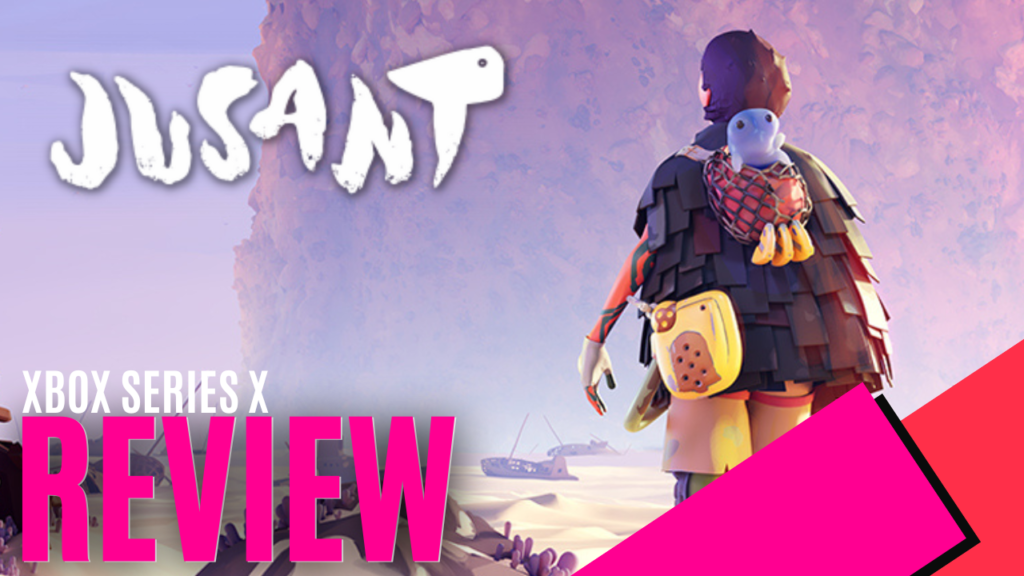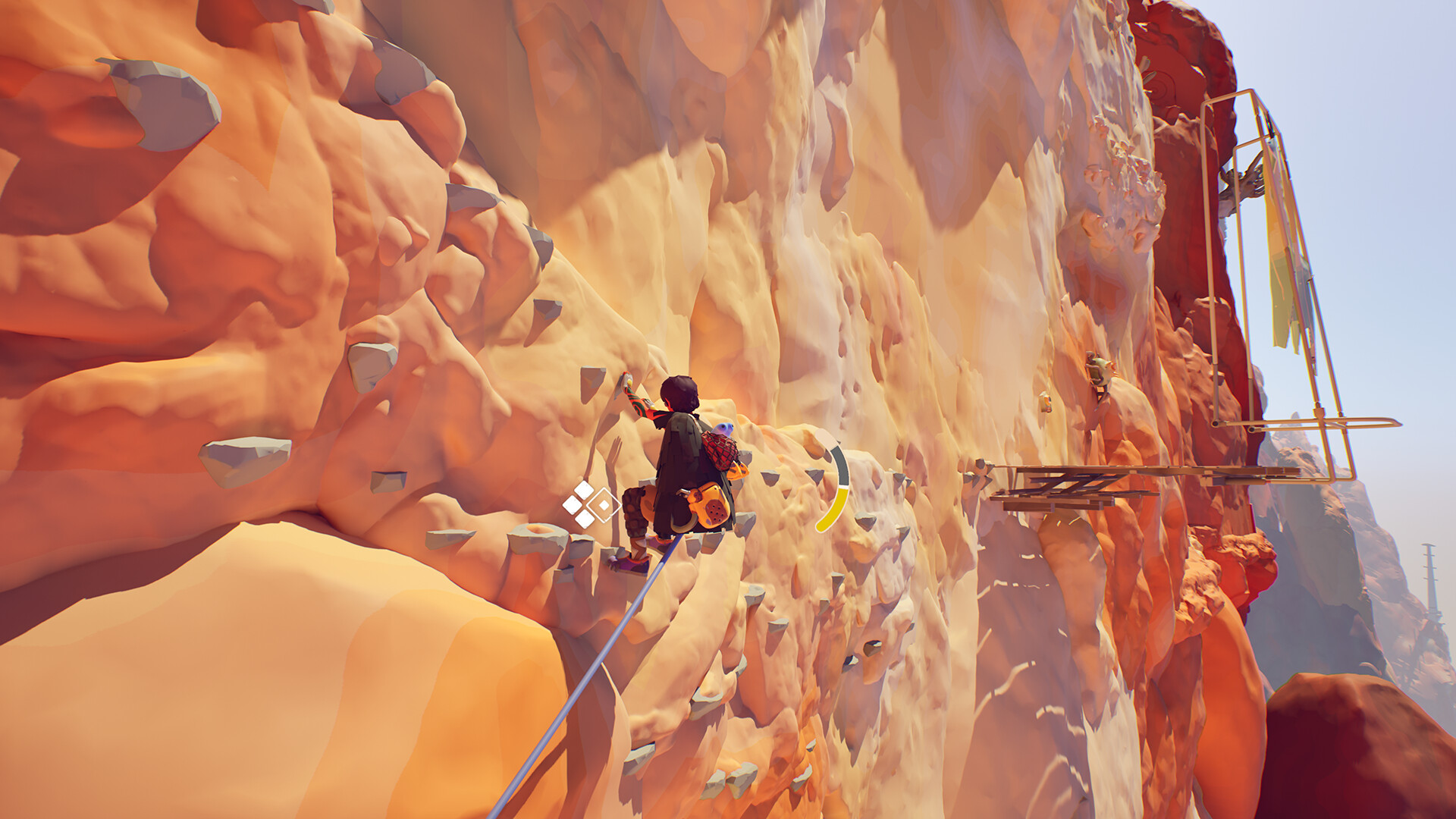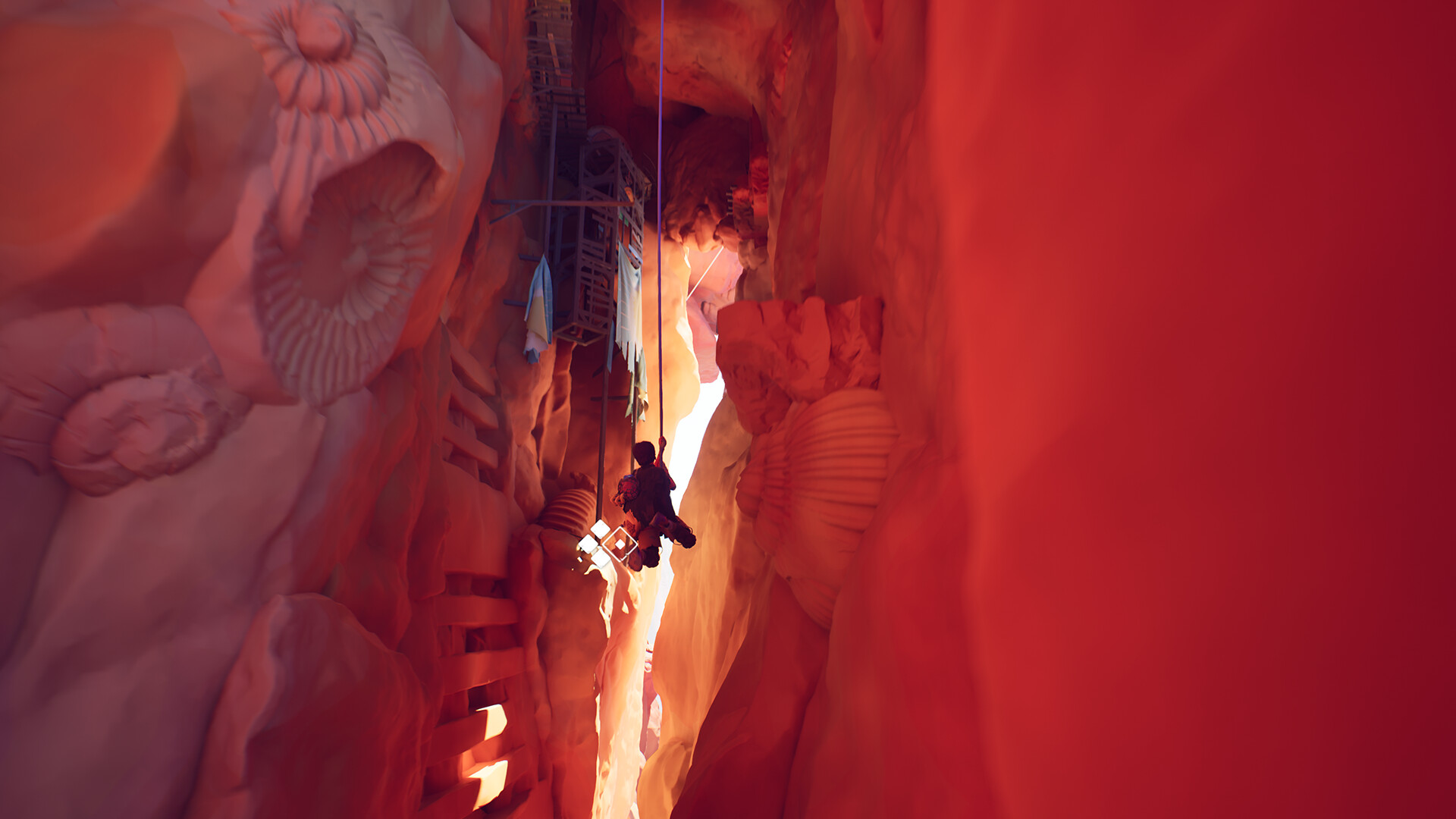
Don’t Nod, the developer and publisher of Jusant, has given us a game about climbing, however, the hard-to-pronounce word is actually a French nautical term for the receding tide. So how does a nautical term translate into a climbing game? Well, that is all part of the discovery and mystery that is Jusant.
Your journey begins as a silent protagonist making their way across a dried-up sea floor, and a giant tower beckons for your attention off in the distance. Surrounding you are miles of sand, only broken up by dead coral reefs and derelict boats, but you are not alone – you have a companion called Ballast. Our tiny, fit-in-the-palm-of-your-hand companion Ballast is incredibly adorable, and with its large eyes and blue squishy look, you can’t help but fall in love with it.
Once you and Ballast arrive at the tower, you gain control of the characters and your adventure begins. That adventure is to climb, but to what end? That is what Jusant’s story is all about. Climb the tower and explore, discover its secrets, and unravel its mysterious story the higher you climb. Sure, I could tell you exactly what is going on, but that is the fun of Jusant. Exploration, mystery, and discovery.
Climbing, when starting, takes a little getting used to. It uses the right and left triggers to activate and deactivate which hand is gripping a surface, so it feels awkward, and jumping feels underwhelming.

Rest assured though, with practice, you will be climbing with speed and accuracy like a professional mountaineer in no time. Before starting your climb, you will attach a rope at your starting point, and at any time during your climb, you can use a piton.
This allows you to effectively create your continue point if you fail to traverse a section of your climb. Since you have only so much rope at your disposal, and only four pinons, planning is essential. If you spend too long climbing, you will not have enough stamina to complete your assent, but failure isn’t a huge deal as the autosaves are very generous, and once you reach a safe point, the rope and any pitons used are returned to you.
There are also collectables in the form of letters and frescos and these are what are used to further the story by revealing the history of the tower. Ballast also helps in its unique way of finding these, but it can also sense the environment to reveal the direction of secrets, but this can also be used to find your next objective if you happen to get lost. Getting Ballast to chirp or trill around flora encourages it to grow, and this can be used to open new climbing paths or make climbing easier in some sections.
However, you are not restricted to a linear path as you climb – if you want to attach a piton to a section of wall and swing across a gap instead of climbing, you can. If you want to mount a small wall and jump to another ledge, you can. You have the freedom to climb however you want. As you climb higher new environmental traversal methods will become available, and these will further assist and challenge your ascent.

The low poly graphics are detailed enough to be stunning to look at, and they’re more than adequate to draw you deep into its world, even though the environment doesn’t differ greatly as you move from section to section. As you climb, there will be many occasions when you will be awe-struck and stop just to soak up the ambience. Animations are fluid, but on occasion, you will move through a section where you will move awkwardly or get hung up on the geometry. This can be either jarring or annoying depending on the situation you get stuck in, however, this never resulted in me having to reload to a previous checkpoint.
The beautifully soothing orchestral music invokes a sense of wonder, encouraging you to explore, and it matches seamlessly with the environment, lifting you to the heights you want to reach as you plan your climb. Sounds used in Jusant are just as finely crafted and cause instant recognition, but they also allow your imagination to wander with the mystery that surrounds you, creating just as much of an adventure as the climbing itself.
The thoughtfulness Don’t Nod has put into making Jusant a rewarding and stressless experience is amazing. Exploring and discovering its mystery makes for a very relaxing feel to what clearly would be a normally stressful endeavour. With more accessibility options becoming available in the future, this will make Jusant more playable for a lot more people. This transformation will also allow those who have already experienced Jusant to revisit it in an even cozier setting.

The Good
- Wonder invoking audio.
- Very forgiving to failure
- Awe-striking environments
- Future accessibility options are planned
The Bad
- Controls are hard when starting
- Occasional awkward movement and geometry hang-ups








